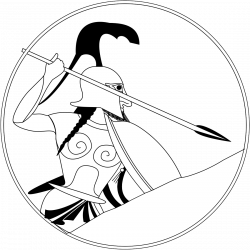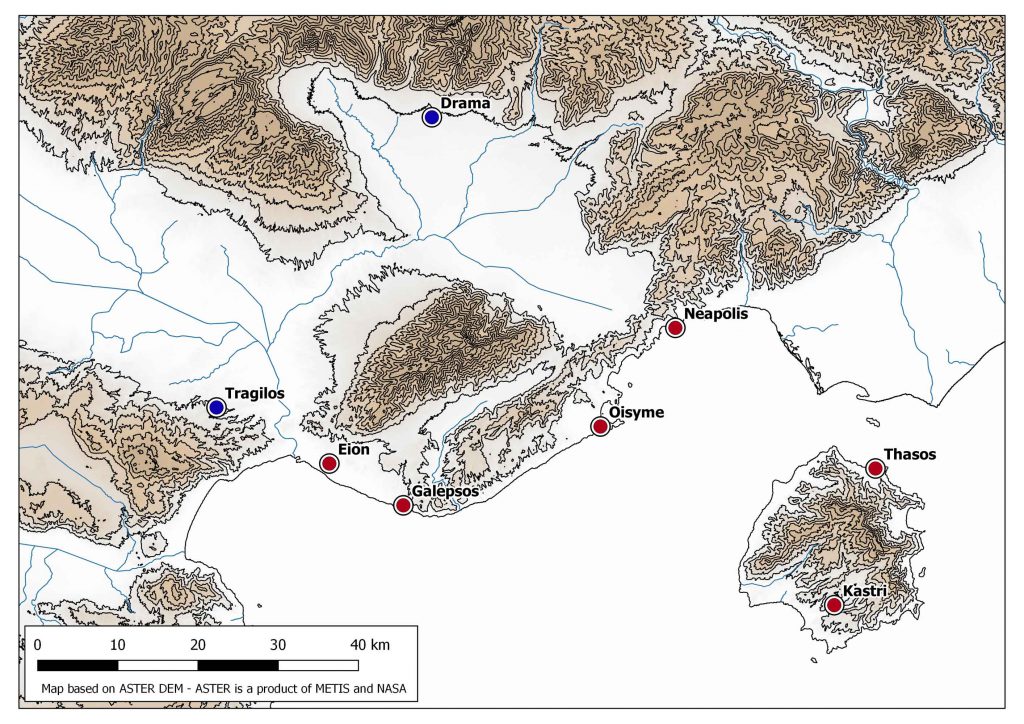Thasos and her sanctuaries
Around the second quarter of the 7th century, the first indications of an organized Greek settlement can be identified on and around the Thasos acropolis. The sanctuaries of Apollo and Athena on the acropolis hill, and of Heracles and Artemis near the 6th-century agora are established. The material recovered from these sanctuaries consists primarily of fine pottery, jewelry, loom weights, figurines and statuary. Unfortunately, very little in the way of early votive weaponry has been recovered from these holy sites. This is quite interesting: in the central and southern Aegean, weapon dedications in sanctuaries are considerably more common than in the Thasian sphere during the 7th and particularly the 6th century.
Continue reading “Archaic Weapons: Graves and Sanctuaries (Part 2)”


